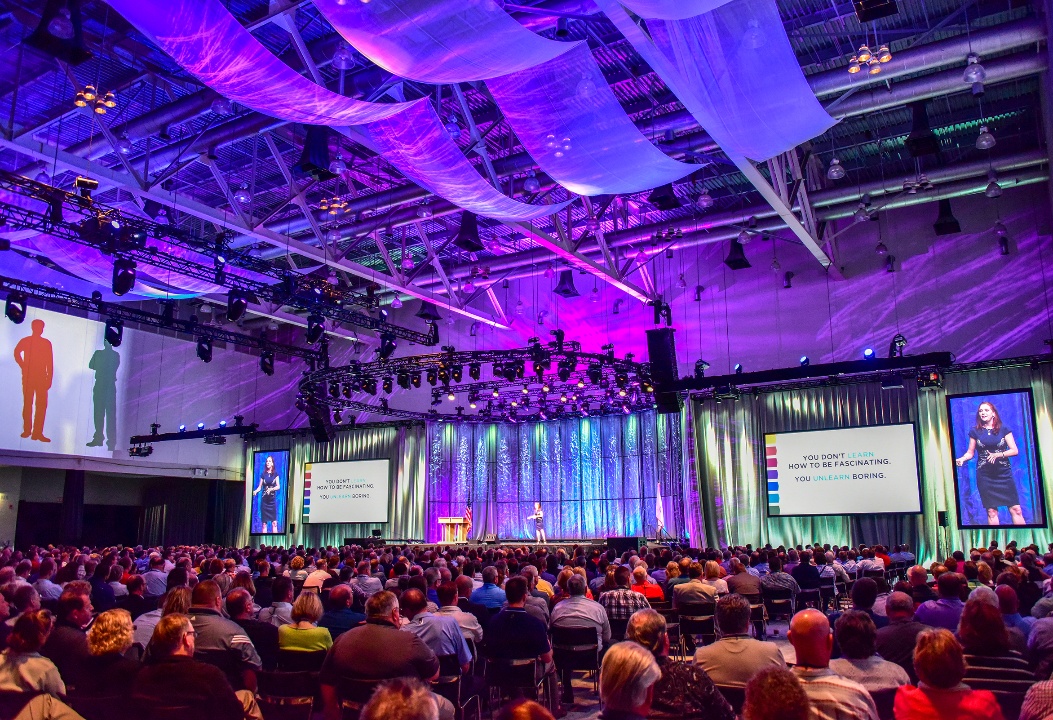Reasons why production companies in charlotte nc matter for your next film project
Recognizing Exactly How Production Companies Operate: A Guide to Their Refine and Offerings
Production companies play an important role in bringing innovative visions to life. Their procedures encompass various phases, from the first principle advancement to the final circulation of a task. Each stage calls for cautious planning and coordination to guarantee success. Recognizing these processes can clarify the intricacies behind the scenes. What aspects influence decision-making at each phase, and just how do they eventually form the last product?
The Principle Growth Stage
The idea development phase acts as the foundation of any type of effective production. During this stage, concepts are created, refined, and crystallized into a meaningful vision. Production groups participate in brainstorming sessions, discovering numerous themes and stories that resonate with target audiences. This stage calls for cooperation amongst producers, directors, and writers, that jointly examine the expediency and market capacity of these principles.
Key elements consist of establishing the style, target, and tone market, which guide the innovative process. Research study plays an essential duty, as groups examine trends and target market choices to inform their decisions. Additionally, initial budgeting and resource assessments start, making sure that the concept lines up with readily available capabilities - production companies in charlotte nc. By the end of this stage, a solid principle emerges, all set for the subsequent phases of advancement. This groundwork is crucial for steering the complexities of production, eventually establishing the phase for a job's success
Pre-Production Preparation and Control
After strengthening the concept, production groups move right into pre-production planning and coordination, an important stage that includes arranging the logistics required for bringing the vision to life. During this stage, numerous elements integrated, including manuscript completion, spreading, location searching, and spending plan monitoring. Groups develop timelines to assure that all facets of the task straighten with the desired capturing routine.
In addition, manufacturing planners protected authorizations and insurance coverage, while communicating with team participants and vendors to verify accessibility and sources (production companies in charlotte nc). This stage also highlights interaction, as collaboration among supervisors, producers, and division heads is vital for smooth operation
Detailed planning warranties that prospective difficulties are determined and resolved proactively, decreasing disturbances throughout filming. Ultimately, reliable pre-production preparation prepares for an effective capturing experience, making certain that all elements are in area to fulfill the creative vision.
Production: The Filming Process
Filming transforms the meticulously prepared vision into reality, recording performances, visuals, and sound in a natural way. This phase entails the collaboration of different departments, including sound, manufacturing, and cinematography layout, each adding to the overall visual and narrative. The director overviews the actors, guaranteeing their performances align with the intended emotional tone, while the cinematographer records the action through carefully selected shots and illumination strategies.

Post-Production: Editing and Completion
Once the shooting process is full, the emphasis changes to post-production, where the raw footage is transformed into a sleek end product. This phase includes a number of vital actions, starting with editing, where editors sort with hours of footage to select the very best takes and construct them into a meaningful story. They work carefully with supervisors to ensure the vision is realized.
Audio layout is an additional essential aspect, as audio tracks are improved, songs is added, and sound impacts improve the checking out experience. Shade correction follows, guaranteeing aesthetic consistency and boosting the state of mind of the movie. Aesthetic effects, if required, are integrated perfectly to create immersive scenes.
The film goes through a top quality control process, inspecting for any type of technological problems. This careful interest to information in post-production eventually shapes the end product, preparing it for the following phases of release and target market involvement.

Circulation and Marketing Approaches
A reliable circulation and advertising and marketing approach is crucial for a film's success, as it identifies how widely the film reaches its desired audience. Production companies usually work together with distributors to develop a launch plan, choosing platforms such as theaters, streaming services, or electronic downloads. A well-timed theatrical release can optimize ticket office earnings, especially when aligned with movie celebrations or seasonal patterns.
Marketing efforts usually consist of trailers, social media campaigns, and promotional occasions to create buzz. Target market analysis plays an important function in crafting customized messages that reverberate with potential visitors.
Additionally, partnerships with sponsorships or influencers can intensify visibility. The performance of these methods is determined with metrics like ticket sales and online engagement, notifying future campaigns. Ultimately, a cohesive distribution and marketing strategy not only boosts a movie's visibility but also adds considerably to its overall profitability and long life in the marketplace.
Regularly Asked Inquiries
Exactly How Do Production Companies Secure Financing for Projects?
Production companies safe and secure funding through various ways, including pre-sales, gives, exclusive financiers, crowdfunding, and collaborations with representatives or studios - production companies in charlotte nc. These methods enable them to finance projects and take care of monetary threats efficiently throughout manufacturing
What Functions Do Supervisors and producers Play in a Production?
Manufacturers look after job advancement, budgeting, and logistics, making certain sources are offered. Directors concentrate on the innovative vision, directing actors and staff to attain the desired artistic outcome, shaping the story and total production high quality.
Just How Are Casting Choices Produced a Job?
Casting decisions are normally made with tryouts, where directors and producers review stars based upon their performance, viability for roles, and chemistry with various other actors members, commonly affected by agency referrals or previous cooperations.
What Is the Average Timeline for Finishing a Film?
The typical timeline for finishing a film commonly ranges from one to three years. This includes pre-production, shooting, and post-production phases, with each phase differing significantly based on project scale and complexity.
Just How Do Production Companies Pick Locations for Shooting?
Production companies select filming places based upon factors like manuscript needs, budget restrictions, ease of access, and visual charm. They often conduct location precursors to review prospective websites and take into consideration logistical aspects such as licenses and area support. ## Recognizing Exactly How Production Companies Run: A Guide to Their Refine and Offerings.
Production companies play a crucial duty in bringing creative visions to life. Their procedures encompass various stages, from the first principle growth to the final circulation of a project. Each phase requires cautious planning and sychronisation to guarantee success. Recognizing these processes can lose light on the intricacies behind the scenes. What aspects influence decision-making at each phase, and how do they ultimately shape the end product?
The Concept Development Stage
The principle advancement stage works as the structure of any effective production. During this stage, ideas are created, fine-tuned, and taken shape into a systematic vision. Production teams engage in brainstorming sessions, checking out numerous styles and stories that resonate with target audiences. This stage calls for collaboration among supervisors, authors, and producers, that collectively evaluate the feasibility and market capacity of these ideas.
Crucial element consist of establishing the category, tone, and target market, which assist the creative process. Study plays a crucial role, as teams examine patterns and audience preferences to inform their decisions. In addition, preliminary budgeting and resource analyses begin, making certain that the principle aligns with available abilities. By the end of this phase, a strong idea arises, ready for the succeeding stages of advancement. This groundwork is crucial for steering the complexities of manufacturing, eventually setting the stage for a job's success.
Pre-Production Preparation and Sychronisation
After solidifying the idea, manufacturing teams move right into pre-production preparation and sychronisation, a vital phase that entails organizing the logistics necessary for bringing the vision to life. During this phase, numerous aspects integrated, consisting of script completion, casting, location scouting, and budget monitoring. Teams establish timelines to ensure that all aspects of the project line up with the desired capturing timetable.
Furthermore, production coordinators safe and secure authorizations and insurance coverage, while communicating with team participants and vendors to confirm accessibility and resources. This stage likewise emphasizes communication, as collaboration amongst directors, manufacturers, and department heads is important for read here smooth operation.
Comprehensive preparation warranties that prospective difficulties are determined and addressed proactively, reducing interruptions throughout filming. Ultimately, reliable pre-production preparation lays the groundwork for an effective shooting experience, making certain that all parts are in location to meet the imaginative vision.
Production: The Filming Process
Recording changes the thoroughly intended vision into fact, catching performances, visuals, and sound in a cohesive way. This phase entails the cooperation of numerous departments, including cinematography, manufacturing, and noise style, each adding to the general visual and narrative. The supervisor overviews the stars, ensuring their performances straighten with the desired emotional tone, while the cinematographer records the activity through thoroughly picked shots and illumination methods.
Throughout filming, timetables are tightly adhered to, as time and sources are commonly limited. Each scene is fired several times to achieve the wanted top quality, with interest offered to mounting, connection, and sound clarity. The production team works vigilantly behind the scenes, taking care of equipment, working with locations, and dealing with any type of unexpected obstacles. This dynamic setting fosters imagination and versatility, inevitably generating the raw footage that will certainly later be improved in post-production, establishing the phase for the end product.
Post-Production: Editing And Enhancing and Completion
Once the recording procedure is total, the emphasis changes to post-production, where the raw video is transformed into a refined end product. This phase includes a number of important actions, starting with editing and enhancing, where editors sort via hours of footage to choose the finest takes and assemble them right into a coherent story. They function very closely with supervisors to ensure the vision is understood.
Audio design is one more critical aspect, as audio tracks are improved, music is included, and sound effects improve the viewing experience. Color improvement complies with, ensuring visual uniformity and improving the mood of the film. Aesthetic effects, if called for, are integrated effortlessly to produce immersive scenes.
The film undergoes a top quality control process, checking for any type of technological issues. This meticulous focus to information in post-production ultimately forms the end product, readying it for the following phases of launch and audience interaction.
Circulation and Advertising And Marketing Techniques
An efficient circulation and advertising and marketing approach is important for a movie's success, as it identifies exactly how widely the film reaches its desired target market. Production companies normally work together with distributors to develop a release plan, selecting platforms such as cinemas, streaming solutions, or digital downloads. A well-timed theatrical release can maximize box office revenue, especially when aligned with movie festivals or seasonal trends.
Advertising efforts usually include trailers, social networks campaigns, and promotional events to generate buzz. Target target market analysis plays an essential duty in crafting tailored messages that resonate with potential viewers.
Additionally, partnerships with sponsorships or influencers can enhance visibility. The performance of these methods is measured via metrics like ticket sales and online interaction, informing future projects. Inevitably, a natural circulation and advertising technique not just improves a film's exposure yet also adds significantly to its total productivity and longevity in the marketplace.
Often Asked Questions
How Do Production Companies Secure Financing for Projects?
Production companies safe funding through various methods, consisting of pre-sales, gives, exclusive financiers, crowdfunding, and collaborations with workshops or distributors. These techniques allow them to finance projects and manage economic threats properly throughout manufacturing.
What Roles Do Supervisors and manufacturers Play in a Production?
Producers supervise task growth, budgeting, and logistics, making certain resources are offered. Directors concentrate on the innovative vision, assisting actors and team to accomplish the preferred artistic result, forming the narrative and overall production high quality.
Exactly How Are Casting Choices Made for a Project?
Casting decisions are typically made with auditions, where producers and supervisors assess stars based upon their performance, suitability for functions, and chemistry with various other actors participants, typically affected by agency referrals or previous partnerships.
What Is the Typical Timeline for Completing a Movie?
The typical timeline for completing a film normally ranges from one to three years. This consists of pre-production, shooting, and post-production stages, with each stage differing substantially based upon job scale and intricacy.
Just How Do Production Companies Select Areas for Shooting?

Production companies select recording locations based on aspects like script needs, spending plan restrictions, accessibility, and visual charm. They frequently carry out location scouts to review potential websites and take into consideration logistical elements Look At This such as permits and community support.
After solidifying the principle, production groups relocate into pre-production preparation and control, an important stage that involves organizing the logistics needed for bringing the vision to life. Production companies select shooting areas based on elements like manuscript requirements, spending plan restrictions, availability, and aesthetic appeal. The idea advancement stage serves as the structure of any kind of effective production. After strengthening the concept, production groups move right into pre-production planning and coordination, a critical phase that entails organizing More about the author the logistics required for bringing the vision to life. Production companies select shooting places based on elements like manuscript needs, spending plan constraints, accessibility, and aesthetic allure.